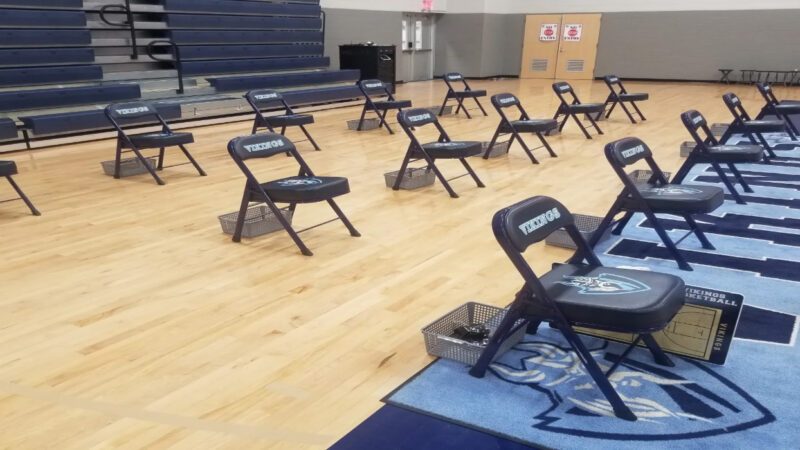Planning for the “Positive” is Different in 2020
Coaches are creatures of habit. We want things done a specific way, which in most cases is “how we have always done it.” As the coronavirus has shown, the best coaches must find a way to adjust, adapt, and accept the things that are out of our control. In this post, we will provide some suggestions to help you work with your administration to provide a positive experience, put safety first, and we hope that it will help you finish the season with your team on the floor.
HAVE A PLAN, BEFORE THE FIRST “POSITIVE”:
- There is a strong chance that someone in your program is going to test positive for COVID. Accepting that will allow you to move forward with planning for this reality.
- What if the Head Coach tests positive, or is exposed, and has to miss a minimum of 14 days?
- What if an Assistant Coach tests positive, or is exposed, and has to miss a minimum of 14 days?
- What if your best player tests positive, or is exposed, and has to miss a minimum of 14 days?
ARE YOU PREPARED FOR THESE SITUATIONS?
When Alabama Football Coach, Nick Saban, had his first false positive (he recently missed a game, from actually testing positive), I was impressed with the Alabama Football program’s response. It was organized, there was no panic, and they continued with their business. As Matt Zenitz wrote in THIS article for AL.com, the goal was to make things “as normal as possible.” There is also a video press conference where Saban acknowledges that they had a plan if any of the coaches were to test positive. So how do YOU go about preparing this plan?
STEP ONE: Put your coaching staff responsibilities to paper. Share this document with your staff. Here is an example from our program. We also have a program guidebook, which dives deeper into the specifics of each coach’s roles during practice, as well as before, during, and after games.
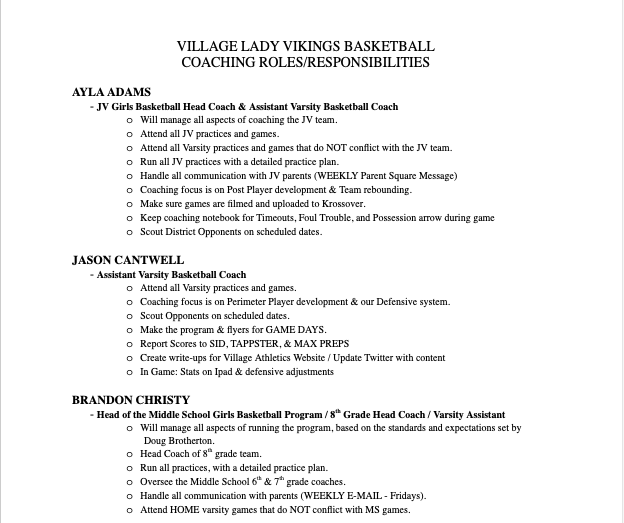
STEP TWO: Discuss and plan how responsibilities will shift if each individual coach (or collection) of coaches has to miss time.
STEP THREE: Let your players know that you are planning for this to take place, so that is mentally prepares them ahead of time.
Another area that coaches should plan and adapt, are practices and game day procedures. Here are some of the things that we have put in place.
- Everyone must wear a mask inside of the building at all times.
- No more than four players allowed in the locker room at a time (this allows for effective distancing). Your locker room might be different.
- Players bring their own water bottles.
- Players are temperature checked and screened before practice. We also apply hand sanitizer at that time.
- Whenever we “circle up,” we have used floor markings (volleyball 10-foot attacking lines) to keep our team spread out.
Thankful for the opportunity to coach our players today!
Our first official practice is in the books. Proud of the effort and energy that our team brought to the floor!#Ubuntu #LadyVikingsHoops #WeAreVillage pic.twitter.com/wJB1ZfZoF9— Doug Brotherton (@CoachBrotherton) November 3, 2020
- Coaches where masks throughout practice. CLICK HERE to find the mask worn by a lot of college coaches, which I have found to be the best mask to wear when coaching.
- I ordered a 3-pack of the BLACK mask for our Assistant Coaches too.
GAME DAY
- We committed to NO SPECTATORS for all home games. This was a decision from our administration, which we supported. While we miss having fans at the game, it does increase our opportunity to successfully finish our season. We are streaming all games via the NFHS Network.
- If you don’t have a budget to stream games, you can easily stream FOR FREE, via YouTube. It might not be the best quality, but it is better than missing multiple games due to the spread of COVID.
- Bench setup has been adjusted, to try to mimic the NBA benches. After the success of the NBA bubble, we found a cost affordable way to create a “safe space,” for each player.
- Each player has their own assigned seat. The first row of chairs are our four coaches and our first sub. The third row of chairs are our starters. The second row are for our bench.
- Each player has a plastic basket behind their chair, for additional masks, their water bottle, towels, a ziploc bag for masks that are already worn, and hand sanitizer.


Timeout organization
- This is another area that coaches should consider. In the past, a timeout would have looked like this:
ALL ACCESS inside the huddle with @CoachBrotherton & The Lady Vikings 🏀 Team. Lady Vikings lead 34-16 in the 2nd quarter!@Villageteams #LadyVikingsHoops#weareVILLAGE pic.twitter.com/Zeqgs94Zt9
— Andy Johnson (@CoachAJohnson) November 2, 2019
- We have now changed our timeouts to increase distance between players, our players wear masks, and we do not share chairs.
- We purchased six stools via Amazon. We keep them against the wall, at the end of our bench.
- For full timeouts, our assistant coaches are responsible to set up the six stools on the corner of the court, near our bench.
- Players in the game grab their mask and water bottle, before coming to the stools.
- Players who are not in the game stand behind the stools.
- At the end of the timeout, our coaches wipe down the stools with Clorox wipes and place them back against the wall.
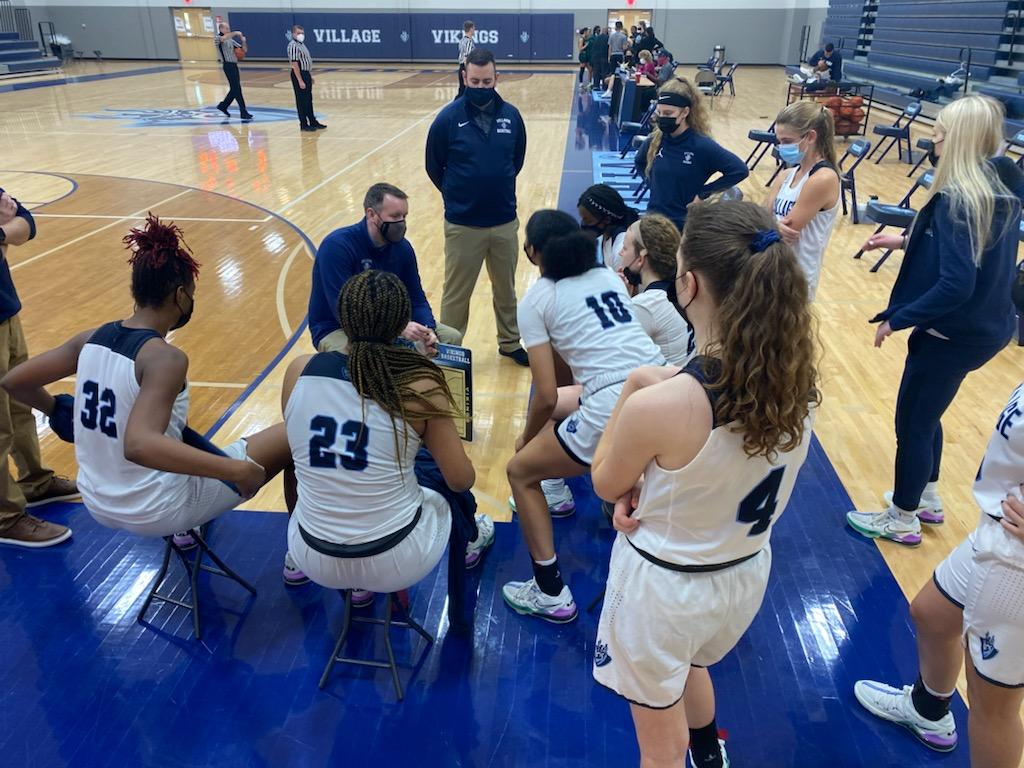
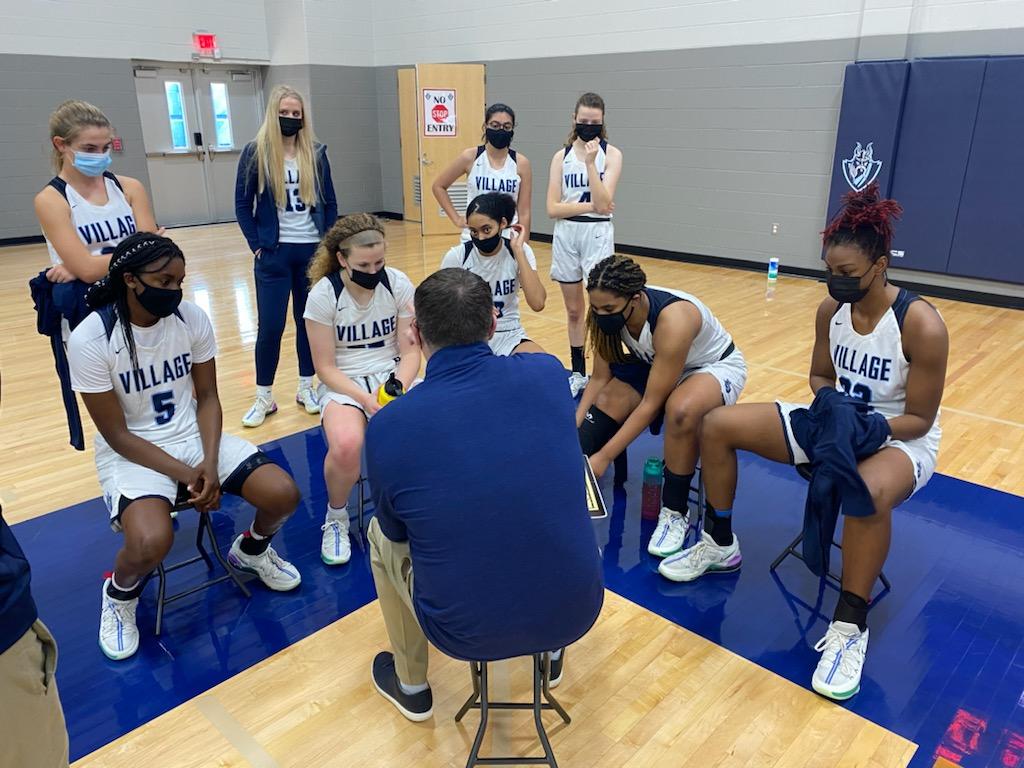
- For 30-second timeouts, we remain on the floor, spread out in a semi-circle.
LOCKER ROOMS
- We are NOT using locker rooms on game days this year. There is no reason to put 12-15 people into a small space, for an extended period of time. Instead, we have created areas in our gym, using the same stools that we have for timeouts.
- We set up 15 stools into a semi-circle, on the sides of our bleachers. A chair is placed in the middle for the coaches. At halftime, our players all put on their mask, grab their water bottles, and walk over to our meeting area.
- Stools are spread out, in multiple rows.
- At the end of halftime, our assistant coaches wipe down the stools with Clorox wipes.
- We have the same set-up, on the opposite side of the bleachers, for visiting teams.
- The same process is used post game.
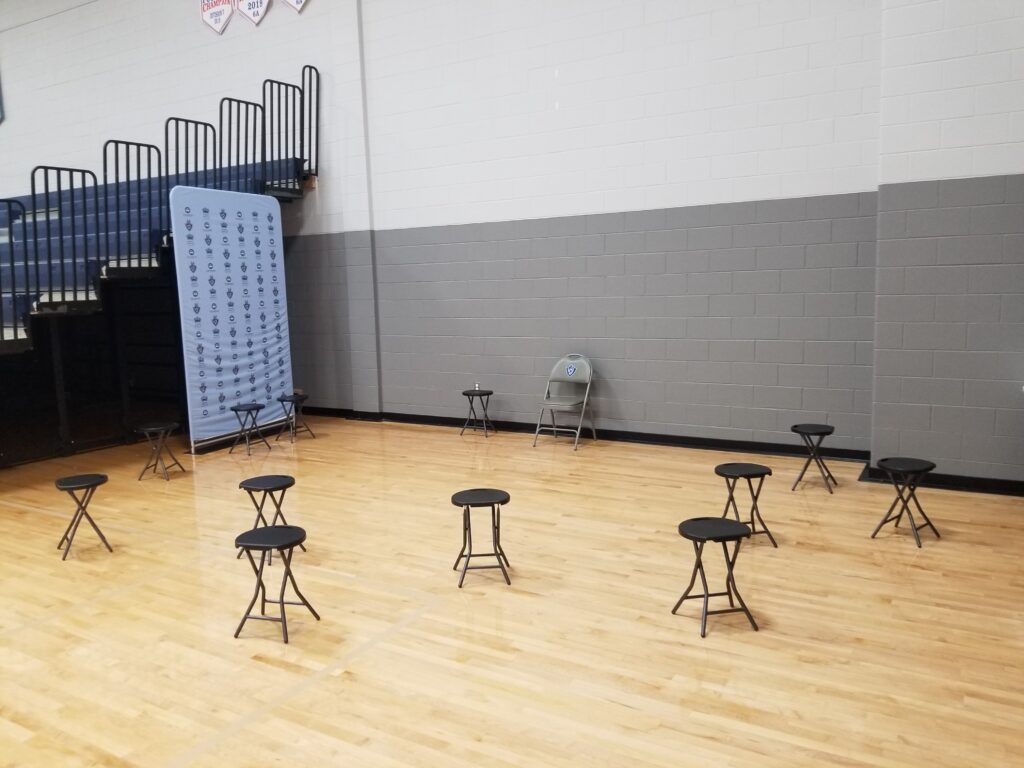
There are a lot of other processes and procedures for coaches to consider, but these have worked well for our program. The key to having a successful season, is the same as helping your team improve. We must eliminate our ego, avoid being stubborn, and adapt for the betterment of our program. If we are stubborn to our old ways, the pandemic is sure to shorten our season. We can finish the season on the court, if we all work together, share best practices, and are willing to be flexible. Lastly, there is no perfect solution, for the imperfect situation that we find ourselves in, but we must always remember that our main mission is to provide student-athletes with a worthwhile experience.

